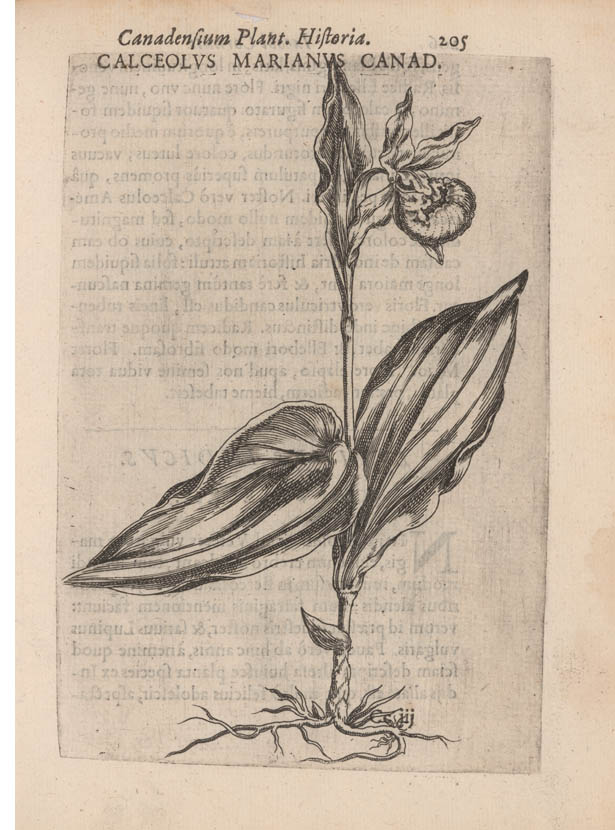Distributed February 17, 2003
For Immediate Release
News Service Contact: Mary Jo Curtis
Through May 1
John Carter Brown Library hosts Plants and Publications exhibition
The John Carter Brown Library is hosting a new exhibition, Plants and Publications from the New World: 1492-1825, through May 1, 2003, in the library’s MacMillan Reading Room. The display features botanical observations made by some of the earliest European travelers to America. The exhibit is free and open to the public.
PROVIDENCE, R.I. — From the time of their arrival in the Americas, European explorers, soldiers, priests and seafarers sent home accounts and specimens of the environment they found in the New World.
A selection of the botanical observations documented by some of these earliest travelers is on display in Plants and Publications from the New World: 1492-1825 through May 1, 2003, in the MacMillan Reading Room of the John Carter Brown Library. Anita Cavagnaro Been, who prepared the library’s 1998 exhibition on the fauna described by 18th-century European observers, also selected the pieces for this exhibition.
Editors: A digital illustration from the exhibition is available from the News Service.

Yellow Lady Slipper
This drawing of the Yellow Lady Slipper is from Canadensium plantarum, by Jacques Philippe Cornut (Paris, 1635), one of the earliest books about North American plants. Cornut never visited America, but he received New World seeds and plants for his botanical garden in Paris. He provided the first description in a European book of approximately 30 previously unknown species.
[Photo: John Carter Brown Library]
Many reports from early travelers and explorers featured personal observations of the natural environment they encountered and of the plant specimens they had collected. Today their writings offer valuable information to environmental historians and afford a remarkable look at the Americas before settlement and exploitation by Europeans.
Although their interest in natural history – and the desire to write about it – was usually secondary to another vocation, settlers from numerous professions wrote on the subject with the financial support of patrons at home, scientific societies, churches, business connections, national governments and, often, their own pocketbooks. Promotional natural histories were written to attract new settlers and investors to the New World, but for most readers of the time, these accounts of personal observations of the New World were of interest in and of themselves.
Many ethnobotanical accounts described the use of plants by native peoples and introduced new medicinal plants and practices to 16th-century European physicians. Although reports of arrow poisons, magic, religious ritual and psychoactive substances were denounced by clerics and others, certain medicinal plants and herbal remedies were incorporated into colonial pharmacology and gained European acceptance.
The John Carter Brown Library expects to publish the catalog for Anita Been’s 1998 exhibition, Animals & Authors in the Eighteenth-Century Americas: A Hemispheric Look at the Writing of Natural History, this year. The catalog of the current exhibition on the study of botany in the early Americas will be published as a sequel.
The John Carter Brown Library is an independently funded and administered institution for advanced research in the humanities, located at Brown University since 1901. The Library houses one of the world's outstanding collections of books, maps, and manuscripts relating to the colonial period of the Americas, North and South, from 1492 to ca. 1825. The library offers fellowships, sponsors lectures and conferences, regularly mounts exhibitions for the public, and publishes catalogues, bibliographies, facsimiles and other works that interpret the Library's holdings. The library is open 8:30 a.m. to 5 p.m. Monday through Friday and 9 a.m. to noon Saturday. For more information, call (401) 863-1262 or visit www.JCBL.org.
######





